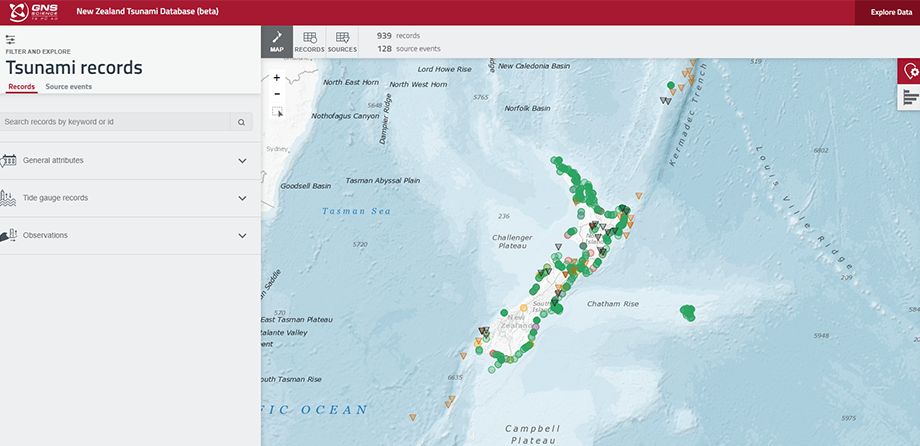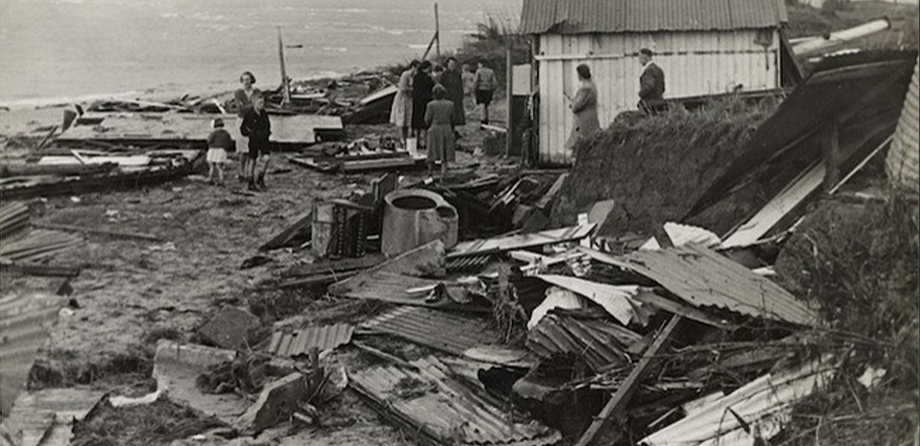Years of data promotes research and understanding of NZ’s tsunami risk
Toka Tū Ake EQC has supported GNS Science in combining hundreds of years of tsunami data and information into a public resource that will increase awareness of New Zealand's tsunami risk, provide evidence to inform better land-use planning, and promote further research.
Toka Tū Ake Risk Reduction and Resilience Manager Sarah-Jayne McCurrach says over the past decade, we have significantly expanded our capabilities to monitor and detect tsunami, and maintaining this data, both historical and modern, is just as important. “Understanding tsunami information and data from monitoring equipment, as well as historic newspaper articles, maritime records, personal diary entries and Māori oral records, complements our modern-day assessment and modelling of tsunami hazard and risk in New Zealand,” McCurrach says.
“Understanding tsunami information and data from monitoring equipment, as well as historic newspaper articles, maritime records, personal diary entries and Māori oral records, complements our modern-day assessment and modelling of tsunami hazard and risk in New Zealand,” McCurrach says.
“While this is only a small piece of the puzzle, the database will be a key tool for decision making plus help steer New Zealand’s science and hazard risk management sector, including insurance, resource management and emergency planning and preparedness.”
The New Zealand Tsunami Database features more than 900 records, dating from the early 1800s to present. It is hosted by GNS Science and will allow open access for the scientific community as well as the public to use.
The announcement of the new database coincides with the 75th anniversary of the second of two big historic earthquakes that happened near Gisborne in 1947. Historical records show these earthquakes were not widely felt but generated two land inundating tsunamis which have come to be known as ‘stealth tsunami’. This information is helping scientists to understand other locations in New Zealand where this type of event could occur and more importantly, provoke research that led to further investment in New Zealand’s tsunami monitoring and detection network.
This information is helping scientists to understand other locations in New Zealand where this type of event could occur and more importantly, provoke research that led to further investment in New Zealand’s tsunami monitoring and detection network.
“Significant research into these types of events has allowed us to better understand and model what could happen and where.”
“While we might not have experienced significant or damaging tsunami events like other countries have in recent years, this database shows we have experienced very large tsunamis in the past. That’s why it is important to know as much as we can about what we could face in New Zealand.”
“Each event is different, hence why scientists place huge value on understanding tsunami source characteristics. It is very exciting to see it coming together after years of advocacy from the sector.”
“The other neat thing is that it is closely aligned and links to NIWA’s paleo-tsunami database, meaning there is some verification of what we see in the ground, to what has been observed,” McCurrach says.
GNS Science Risk Scientist Finn Scheele says most of the tsunami database entries are the result of many years of dedicated historical research by former GNS researcher Gaye Downes.
“We are pleased that this recent upgrade of the database future-proofs this valuable resource by enabling us to add modern observations of tsunamis such as social media and different instrumental records,” he says.
The database is now live and over time, GNS hopes to also add sea level/tsunami gauge and Deep-ocean Assessment and Reporting of Tsunami (DART) buoys data to create a single source for key observational data from historical and modern events.
McCurrach says New Zealanders need to continue to understand their risk.
“Toka Tū Ake continues to invest in science to help us better understand the tsunami impact around New Zealand and help to evaluate the most effective risk management options to keep our whānau, communities, and properties safe,” McCurrach says.
“It can be scary to think about a tsunami happening on our shores, but it’s important to be prepared. Remember, if you feel a long or strong earthquake, get gone,” she says.
The New Zealand Tsunami Database can be accessed here(external link). GNS Science will be configuring a host domain for the database in the coming weeks.